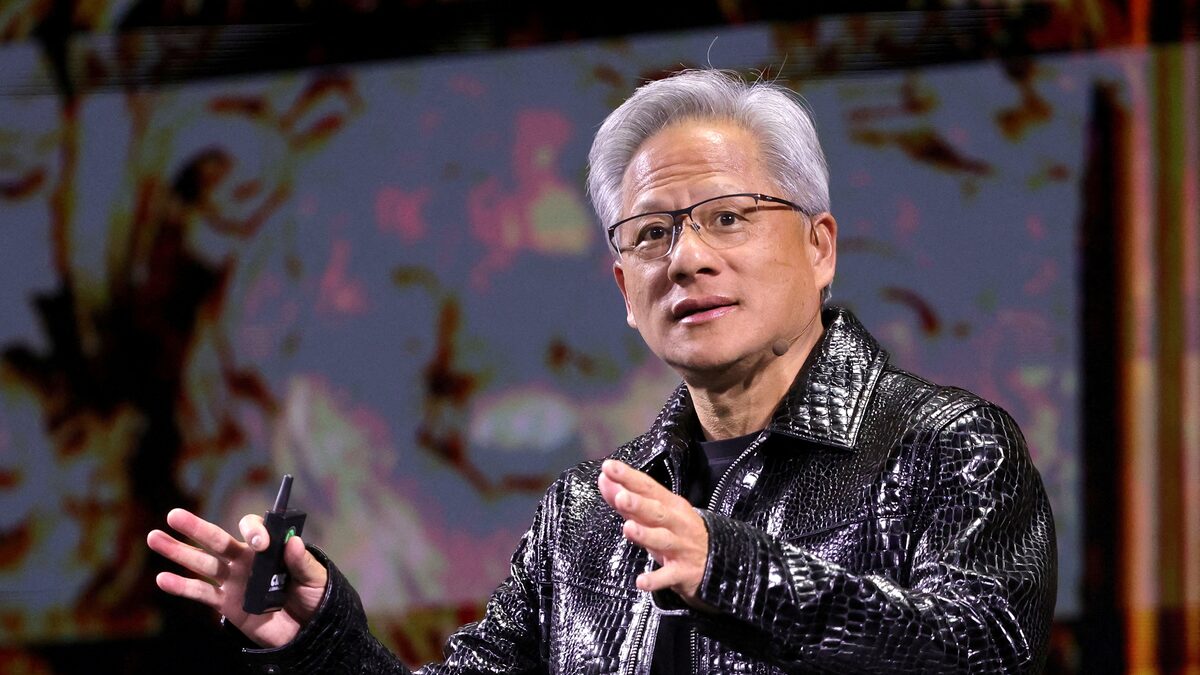The recent remarks by Nvidia CEO Jensen Huang have once again ignited conversations about the future of artificial intelligence. Despite a tepid sales forecast that briefly shook investor confidence, Jensen Huang AI vision remains steadfast the world is still in the early stages of a massive transformation, with AI poised to generate trillions in value over the next five years.
Nvidia’s third-quarter forecast fell short of Wall Street expectations, leading to a 1.56% dip in premarket trading as shares fell to $178.77. Investors quickly interpreted the cautious outlook as a potential cooling in AI demand.
Yet, Huang swiftly dismissed the narrative of decline. To him, short term financials are minor fluctuations in the face of a once in a century opportunity. His conviction is clear the AI revolution is not slowing it’s accelerating.
The Core of Jensen Huang’s AI Vision
Huang believes that AI is not a technological trend but an economic revolution. He frequently compares the rise of AI to the invention of the internet, electricity, and even the steam engine.
According to him, the Jensen Huang AI vision revolves around three main pillars, AI as Infrastructure Just like the internet became the backbone of commerce, AI will become the foundation of every industry. AI at Scale From chatbots to autonomous cars, AI systems will no longer be niche but central to daily life.
AI Democratization Powerful AI tools will not remain confined to tech giants but will be accessible to startups, researchers, and small enterprises. Several experts echo Huang’s confidence.
Dan Ives, Analyst at Wedbush Securities, noted, Nvidia’s forecast may appear disappointing to traders, but the secular demand for AI chips is undeniable. This is a marathon, not a sprint.
Fei-Fei Li, Stanford AI Pioneer, reinforced Huang’s claim AI is not just about technology it’s a societal transformation. We’re entering an era where AI touches education, medicine, and government.
These expert insights align seamlessly with the Jensen Huang AI vision, proving that Nvidia’s future role is far from limited.
AI in Healthcare
Nvidia’s Clara platform is a powerful example of how AI is reshaping healthcare. During the COVID-19 crisis, researchers used Nvidia GPUs to accelerate genome sequencing, enabling faster detection of virus mutations.
One standout example was Oxford Nanopore Technologies, which leveraged Nvidia’s chips to reduce sequencing time from weeks to hours. This advancement saved critical time for public health officials and researchers.
Such breakthroughs validate Huang’s claim that AI will become indispensable infrastructure. Financial institutions are among the fastest adopters of Nvidia AI technology. Take JPMorgan Chase, which uses Nvidia GPUs for fraud detection.
By training machine learning models on massive datasets, the bank reduced false positives by 20% and detected millions of dollars in fraud more efficiently.
This practical adoption mirrors the Jensen Huang AI vision AI doesn’t just reduce costs it creates new layers of trust, security, and efficiency in industries that affect millions of lives.
As a developer experimenting with machine learning, I once trained models on CPUs. The process was slow, taking hours for even modest datasets. But with Nvidia GPUs, the time reduced drastically to minutes.
That acceleration changed everything. It allowed me to test multiple models, refine them, and deploy more accurate solutions at a pace I never imagined possible. This personal journey reinforced the belief that Nvidia is not just building chips it’s building time machines for developers.
Risks That Could Challenge the Vision
No vision comes without risks. Despite Huang’s optimism, several hurdles remain, Rising Competition AMD and Intel are developing powerful AI chips, while Google and Amazon are building custom silicon.
Supply Chain Issues Global chip shortages could slow Nvidia’s ability to meet demand. Geopolitical Tensions US export restrictions on advanced AI chips to China may limit Nvidia’s expansion.
Even with these risks, Nvidia’s diversified strategy ranging from hardware to networking and AI platforms positions it strongly for long term resilience.
Huang projects that AI will drive a multi-trillion-dollar global market within five years. His belief isn’t just theoretical industries are already proving it true Healthcare Faster diagnostics and drug discovery.
Automotive Autonomous driving systems powered by Nvidia DRIVE. Media & Entertainment Generative AI tools for creating video, music, and games. Defense & Government AI driven cybersecurity and intelligence systems.
Each of these domains confirms that the Jensen Huang AI vision is not about one company’s growth it’s about humanity’s next great leap.
Short Term Pain, Long Term Gain
While Wall Street reacts to quarterly sales dips, Nvidia continues to focus on long term fundamentals. Historically, the company has weathered storms before. In 2018, the cryptocurrency crash slashed Nvidia’s GPU sales, but within two years, the AI explosion propelled it higher than ever.
The same may play out again. Current skepticism may be shortsighted compared to the seismic changes AI will bring in the coming decade.
Nvidia’s short term sales guidance may have disappointed investors, but Jensen Huang AI vision paints a different picture one where artificial intelligence is the new industrial revolution.
From saving lives in healthcare to securing financial systems and enabling innovation for developers, Nvidia’s role is already evident. The coming years may well prove Huang right the AI boom is far from over, and Nvidia is not just a participant but the architect of the future.

